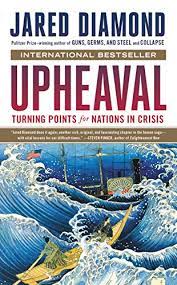With images of sober-faced priests, sour-faced Puritans, and stern-faced evangelists firmly embedded in our corporate psyche, it can be rather jarring to ask the question in the title of Steve Wilkens book, What’s So Funny About God?
 Wilkens faces another challenge. The few books about humor and theology are decidedly unfunny. He combats this trend with a light, breezy style that enhances rather than hides his content.
Wilkens faces another challenge. The few books about humor and theology are decidedly unfunny. He combats this trend with a light, breezy style that enhances rather than hides his content.
Standard categories of humor are embedded in our theology. We have irony (the Pharisees ask Jesus for a sign right after he feeds five thousand), political satire (the gross excesses of the Persian Empire in Esther), reversal (the happy surprise of Easter), paradox (life comes from death; we are both saved and sinners).
Then there is the incongruity of the “high and low, animal and exalted” wrapped up in God’s most amazing creation—human beings made in his image. We are astounding spiritual beings who also poop. No wonder Gnostics didn’t believe Jesus became human. They had no sense of humor!
In addition, amidst his insightful comments, Wilkens liberally sprinkles in jokes (relevant to the points he is making). A few favorites:
 Two cows are standing in the field. One asks the other, “Are you worried about this mad cow disease going around?” The other relies, “Why should I be? I’m a helicopter.”
Two cows are standing in the field. One asks the other, “Are you worried about this mad cow disease going around?” The other relies, “Why should I be? I’m a helicopter.”
Medium-sized church building for sale. Sleeps four hundred.
Saying “I’m sorry” and “I apologize” usually mean the same thing. Except at a funeral.
The book finds the funny in Christmas, Easter, everyday life, and the end times (“Does This Eschatology Make My End Look Big?”). The thing about comedy, which is also true of this book, is that it sneaks in deep truth when we aren’t looking. Among these is the discovery that not only can we love God, we can also enjoy him.
—
photo credit: Robert Owen-Wahl (Pixabay)


 In chapter 11 of
In chapter 11 of  Johnson also considers two ways ideas arise. One is in the “Eureka moment” that I focus on in Write Better. The second is “the slow hunch” pattern of idea generation. That is, we muse over a puzzling observation for a period of months or even years before a solution emerges in bits and pieces, rather than all at once. In either case, interacting with many different perspectives, subjects, and people is central to the solution.
Johnson also considers two ways ideas arise. One is in the “Eureka moment” that I focus on in Write Better. The second is “the slow hunch” pattern of idea generation. That is, we muse over a puzzling observation for a period of months or even years before a solution emerges in bits and pieces, rather than all at once. In either case, interacting with many different perspectives, subjects, and people is central to the solution.  Many people fear public speaking more than death. Over years of speaking to small groups and rooms of hundreds, following certain practices have helped me prepare and be relaxed (ultimately allowing me to form a habit of speaking that has even made doing so spontaneously possible).
Many people fear public speaking more than death. Over years of speaking to small groups and rooms of hundreds, following certain practices have helped me prepare and be relaxed (ultimately allowing me to form a habit of speaking that has even made doing so spontaneously possible).
 That, however, while valid, can be a bit dull. Here’s another strategy. Extend the metaphor embedded in the cliché. Again, good, general advice but can I give an example? Yes, I can.
That, however, while valid, can be a bit dull. Here’s another strategy. Extend the metaphor embedded in the cliché. Again, good, general advice but can I give an example? Yes, I can.
 Counterintuitively, limiting your audience can increase your readership. How? By making sure you go deeply into that narrow group. Writing successfully for all parents is hard because there are so many other resources and bestselling books already available. You might therefore get fewer readers for the broad audience than for the narrow one where there is less competition.
Counterintuitively, limiting your audience can increase your readership. How? By making sure you go deeply into that narrow group. Writing successfully for all parents is hard because there are so many other resources and bestselling books already available. You might therefore get fewer readers for the broad audience than for the narrow one where there is less competition. Be alert, however, that not all graphic designers have the same training or experience. Someone expert at magazine covers or web pages may wrongly apply those design principles to a book page. They are not the same. Try to find someone who knows proper proportions for margins, line spacing (or leading), and so forth—for books.
Be alert, however, that not all graphic designers have the same training or experience. Someone expert at magazine covers or web pages may wrongly apply those design principles to a book page. They are not the same. Try to find someone who knows proper proportions for margins, line spacing (or leading), and so forth—for books. Unfortunately, the “singular they” has become so common that it is often used when it is just not necessary. Consider:
Unfortunately, the “singular they” has become so common that it is often used when it is just not necessary. Consider: Phase one is acquisition editing. An editor’s role here is to sign up authors to provide articles, blogs, books, or other written material. This is likely the first gatekeeper a writer encounters. Sometimes editors solicit pieces from writers they know, and sometimes writers come to editors with ideas. This phase has been jokingly (derisively?) referred to as “belly editing” for the legendary lunch meetings between editors and authors.
Phase one is acquisition editing. An editor’s role here is to sign up authors to provide articles, blogs, books, or other written material. This is likely the first gatekeeper a writer encounters. Sometimes editors solicit pieces from writers they know, and sometimes writers come to editors with ideas. This phase has been jokingly (derisively?) referred to as “belly editing” for the legendary lunch meetings between editors and authors.  The final phase is copyediting which deals with grammar, spelling, punctuation, house style, and format. Fact checking may arise here or perhaps at the line editing stage. Sometimes line editing and copyediting will be done simultaneously by a single person, collapsing these last two phases into one. After each stage authors are normally given opportunity to review the editing, respond to questions and suggestions, and to make further revisions.
The final phase is copyediting which deals with grammar, spelling, punctuation, house style, and format. Fact checking may arise here or perhaps at the line editing stage. Sometimes line editing and copyediting will be done simultaneously by a single person, collapsing these last two phases into one. After each stage authors are normally given opportunity to review the editing, respond to questions and suggestions, and to make further revisions.